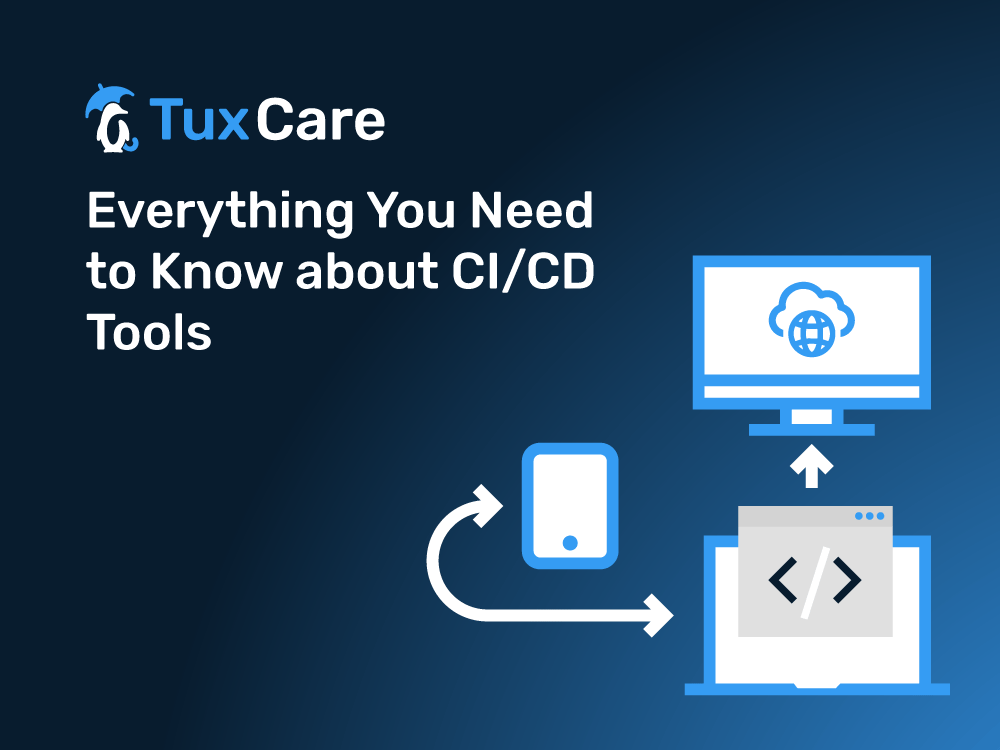Everything You Need to Know about CI/CD Tools
The core reason why organizations utilize CI/CD is that they’re supremely beneficial for system administration, live patching, or patch management, as well as testing code changes through integration and continuous delivery.
I’ll be walking you through what CI/CD tools are, how integral cloud CI/CD is for developers today, and the factors you should consider before choosing that tool.
What is CI/CD?
Continuous integration (CI) assists developers in making small changes to check and test their code. Since there are many requirements and steps involved, CI helps in automating the process to offer developers a robust and reliable framework to build, test, and package their applications.
Continuous delivery (CD), on the other hand, automates completed code into environments for development and testing. CD automatically deploys code changes without any manual intervention, which helps organizations opt for a more seamless process for app development.
Why Should You Host CI/CD in the Cloud?
Cloud CI/CD integration has grown immensely in popularity, and CI/CD software is no exception to that. Hosting cloud CI/CD is beneficial if developers and testers are geographically distributed and need to host their repositories without the need for a physical server.
Not only does this offer a better, more enhanced experience, but it is also ten times more beneficial than hosting software on physical, remote servers. Not only can you leverage a variety of automation tools, but hosting CI/CD software in the cloud makes it both faster and easier for pipelines to interact with source code repositories.
Cloud CI/CD offers three important advantages. Let’s dive into what they are and how they can benefit enterprises.
Infrastructure as Code
The infrastructure of a cloud-based CI/CD tool is the code. A remote server is incredibly difficult to treat as it requires an abundance of physical resources that need to back up the server before processing to fix bugs. With cloud CI/CD, a server can simply be replaced with a new one that is required.
This takes away manual effort and any expense for reconfiguring remote servers. The infrastructure can be treated or fixed by simply being put through the CI/CD pipeline.
Cost
What you don’t need to fret about with cloud-integrated CI/CD tools is the cost of outsourcing hardware. With accelerated time-to-value, you can deploy code changes efficiently and on time, offer faster turnaround times to your customers, and take away the cost-heaviness you would have to bear the brunt of with physical, remote servers.
Containers
Containers allow multiple applications to run on one specific server. Using containers within the CI/CD pipeline makes it incredibly easy to deploy code changes. A tremendous benefit that comes with a cloud-based CI/CD pipeline is that you can leverage multiple automation tools to cater to increased demand and capacity while saving costs simultaneously by killing or reducing containers when the demand isn’t as high.
Factors to Consider before Choosing a CI/CD Tool
There are a couple of factors that you need to think about before choosing a CI/CD tool. Since different developers have different needs, here are some options that they can consider.
Open-Source vs Commercial
Open-source platforms like GitLab offer several benefits beyond simply being free of cost. The community’s problem-solving approach is greatly beneficial for enterprises, all while minimizing costs.
However, some commercial platforms do come with benefits that open-source communities don’t offer, such as paid software support. This is when pricing models in the higher tier offer a support team that can offer a ‘one and done’ solution. So, it’s important to consider this cost/benefit analysis.
Cost Benefit and Efficiency
Most enterprises often consider the current needs of the organization without considering the expected needs. Will investing in CI/CD tools help reduce manual workload and interference?
Analyzing the cost along with the workflow you expect from those tools is imperative if you want revenue-generating functionality in your organization. More expensive CI/CD plans may offer additional security, too.
Supporting Programming Languages
Regardless of the CI/CD tool you go for, it needs to support your programming language. However, if it does not, developers would need to manually intervene and write additional plug-ins for the tool.
So, choosing a CI/CD tool that supports your programming needs for languages such as Python, Java, and PHP is ideal.
Let’s bring it back to the crux, folks. Continuous integration and continuous delivery are key tools that are used by developers and enterprises today. Continuous integration is an automation process where developers can make code changes to an app, whereas continuous delivery is when the app undergoes testing for bugs and automates the delivery of tested software into infrastructure environments.
Since multiple users work on one given project, it’s not uncommon for cloud-hosted servers to run into errors. And, with multiple developers across the world, it’s crucial to utilize patch management best practices in CI/CD tools to patch software before these bugs and errors are magnified.
Since TuxCare is the only provider that offers live patching of bugs and vulnerabilities across shared libraries, kernels across all popular Linux distributions, virtualization platforms, and open-source databases, securing CI/CD pipelines is now simpler than ever before.
Get in touch with TuxCare’s cybersecurity experts today to streamline your “Continuous integration and continuous deliver” software by securing CI/CD pipelines with automated, rebootless patching that can minimize your workload and eliminate patching-related outages.



 Documentation
Documentation Login
Login



